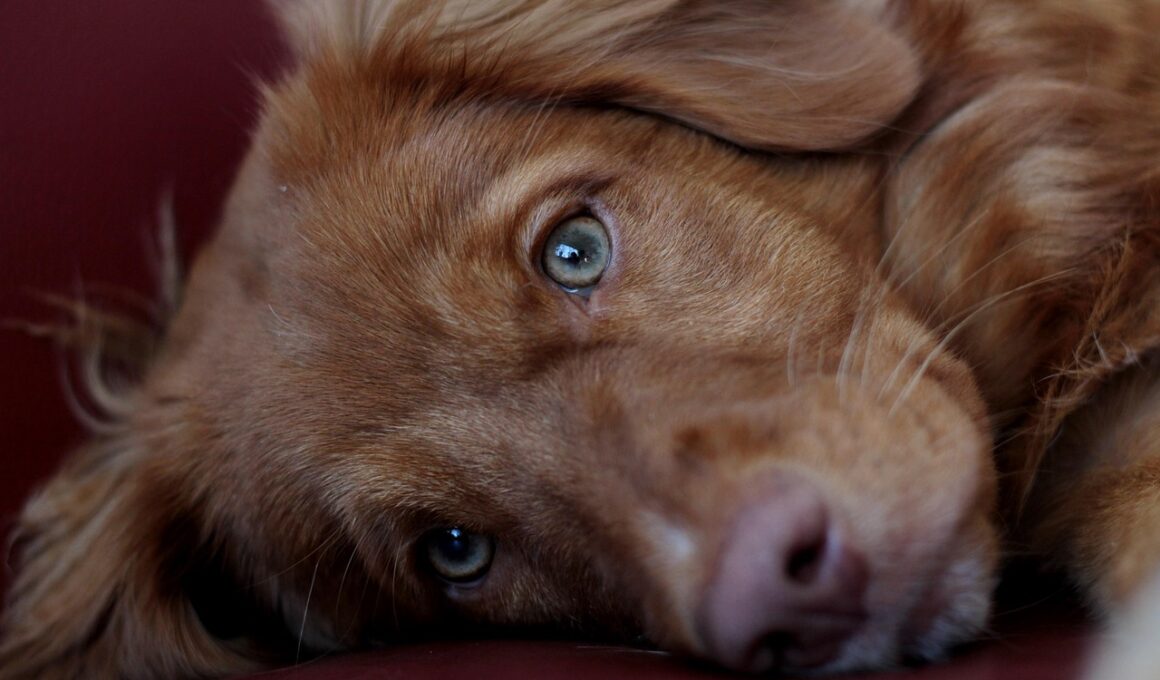Puppy Proofing Your Home: Safety Tips
Bringing a puppy into your home is an exciting experience, yet it also requires careful planning to ensure safety. Puppies are naturally curious and may explore every nook and cranny of your living space. To create a safe environment, start by identifying potential hazards throughout your home. Eliminate choking risks, such as small items or loose cords, by securing them out of reach. Additionally, consider your puppy’s tendency to chew. Keeping fragile items off surfaces or out of reach can prevent accidents. When assessing your home, also pay attention to indoor plants, as some may be toxic to dogs. For instance, lilies and azaleas can pose significant health risks. Utilize pet-safe blocks to keep plants away from areas your puppy can access. We also recommend installing baby gates to limit access to staircases or potentially dangerous areas. This method not only keeps them safe but also allows them to explore in a controlled manner. Remember, a well-prepared home increases the chance of a harmonious coexistence with your new furry friend. Vigilance during the early stages will set the foundation for a safe and happy companionship.
Creating a Safe Space
Establishing a designated safe space for your puppy is crucial for their sense of security. A quiet room or area should serve as their retreat, filled with their bed, toys, and water. Create a comfortable ambiance where they can unwind, especially during stressful moments. Additionally, ensure this area is free from any hazardous materials, such as cleaning supplies or heavy furniture that could topple over. Investing in pet-specific furniture can also help maintain a safe living environment. For example, sturdy, chew-resistant items will reduce the likelihood of injuries or messes. Furthermore, regularly inspect this space for items your puppy may try to chew on or swallow. Use baskets or storage containers to keep everything organized and up high. Puppy-proof your living area further by using non-toxic materials whenever possible. Your new companion should feel relaxed and secure in their space; this will ultimately contribute to their training and adaptability. Lastly, consider implementing a routine that includes regular breaks in their safe space, allowing them to recharge and become accustomed to their new surroundings. A nurturing start will lead to a confident and loving adult dog.
Another essential component of puppy proofing involves managing wires, cords, and electronics. Puppies are notorious for chewing on anything they can find, especially electrical cords. To prevent accidents, use cord covers to protect wires and deter chewing. Additionally, rearranging furniture to block access to outlets can provide an extra layer of security. Affix any loose cords to walls using clips or ties to minimize tempting obstacles. Another practical consideration is securing your TV and other appliances. Weighty devices can pose risks; always anchor them to the wall with brackets to prevent tipping. Beyond electrical hazards, carefully assess your spaces for any choking risks or usable tools that could harm your puppy. Even small items like rubber bands or paper clips can lead to an emergency visit to the vet. Regularly check your floors and spaces for items that should be removed. This diligence ensures a safe environment for exploration and play. By taking these precautions, you maintain a safe space while satisfying your puppy’s adventurous spirit. A proactive approach opens the door for a bonding experience filled with playfulness and joy.
Grooming and Cleaning Supplies
When preparing your home for a new puppy, it’s crucial to address potential hazards posed by grooming and cleaning supplies. These products often contain chemicals that can be harmful if ingested and should be stored safely out of reach. This includes shampoos, conditioners, and any other pet grooming items. Using cabinets with childproof locks can be an effective strategy to keep these supplies secure. Additionally, be mindful of cleaning agents used across your home. Many household cleaners may not be pet-friendly, possibly resulting in health issues. To mitigate risks, choose natural or non-toxic products designed for homes with pets. There are many alternatives available that clean effectively while keeping your puppy safe. It’s advisable to create a checklist of items needing to be relocated to secure storage. Don’t forget to consider your trash bins, often full of debris and possibly hazardous materials; securing lids can prevent inquisitive puppies from accessing harmful items. Furthermore, when using cleaning supplies, give your surfaces time to air out before allowing your puppy back into those areas. Knowledge and preparation empower you to create the healthiest environment for your furry companion.
Your windows and doors also deserve your attention when puppy proofing your home. Puppies can easily squeeze through openings or attempt to jump through screens, leading to potential dangers outside. Therefore, ensure that all windows are securely fastened, and consider installing screens where necessary. Use sturdy screens that can withstand the playful energy of your puppy. Additionally, creating a habit of closing doors behind you can prevent a chance escape. Consider using door locks to limit your puppy’s access to areas that might be unsafe while alone. Perimeter security is another aspect to consider. Fencing in your backyard or using gates can keep your puppy safe from wandering into traffic or encountering other animals. Regular maintenance of these barriers is essential to ensure they remain secure. This can include checking for gaps or weak parts in your fence every so often. By undertaking these measures, you can cultivate a safe, happy space for your puppy. A careful evaluation of all entrances and exits in your home and yard will instill peace of mind during playtimes and training sessions alike.
Socializing Safely
Socializing your puppy is a crucial aspect of their development; however, safety should be a top priority. When introducing your new pet to other dogs or people, supervise every interaction until you are confident in their behavior. Start with smaller, controlled environments where they can become accustomed to new experiences without feeling overwhelmed. Use a leash when meeting new friends to maintain control and ensure a positive experience. It’s also wise to expose your puppy to veterinary visits early in life, creating positive associations with these environments through treats and calm engagement. Keeping a close eye during playdates helps you to identify any discomfort or anxiety. Watch for signs of stress in your puppy; their reactions will indicate if they’re feeling safe. This nurturing approach will foster their confidence in various situations and with different individuals. Moreover, participating in puppy classes might provide additional socialization opportunities under expert guidance. Engaging experiences during these formative months contribute towards a well-behaved adult dog, ready to face the world with poise. These early lessons shape their capacity for joy as they flourish into your reliable furry companion.
Finally, don’t overlook the importance of regular check-ups and vaccinations for your puppy’s health. A healthy puppy is less likely to encounter accidents stemming from illness. Scheduling visits with your veterinarian should be high on your priority list as soon as you bring them home. They will offer necessary vaccinations, guidance on nutrition, and advice on any breed-specific needs. Additionally, consider using this time to discuss behavior training and socialization tips tailored for your puppy. Early training will support their growth into a confident, well-mannered adult dog. Ensure you have pet insurance to cover any unexpected injuries or health complications. This financial safety net can alleviate stress during emergencies, providing you peace of mind. Engaging the whole family in your puppy’s care routine fosters bonding opportunities. Teaching children how to interact safely with your puppy also lays the groundwork for lasting friendships. Strive for consistent communication and patience with your puppy as they learn and explore. It’s through this nurturing engagement that your relationship deepens, creating a loving atmosphere in your home. Together, these practices will pave the way for a beautiful life filled with companionship and happiness.
Embracing the journey of puppy proofing your home incorporates passion, understanding, and dedication toward your new pet. Safety precautions, routines, and socialization are essential elements of creating an environment tailored for your puppy’s needs. Each aspect is intertwined and contributes to their overall comfort and well-being. By proactively addressing potential risks at home and fostering reliable safety habits, you instill a sense of security in your puppy. This playful companionship enriches your life and promotes a positive experience during their critical developmental stages. As you foster a loving relationship, your puppy develops into a responsible, adaptable member of your home. You’ll witness firsthand the joy that a well-prepared environment can infuse into your daily interactions. Being attentive to risks keeps your puppy safe while encouraging their adventurous spirit and curiosity. These strategies will support your puppy’s engagement with their surroundings and establish boundaries to grow into a balanced adult dog. Take these practical tips and implement them within your space, making adjustments as needed, and remember that patience and knowledge are your greatest allies in this journey. Ultimately, your new puppy deserves a safe, loving home filled with opportunities for growth and learning.


